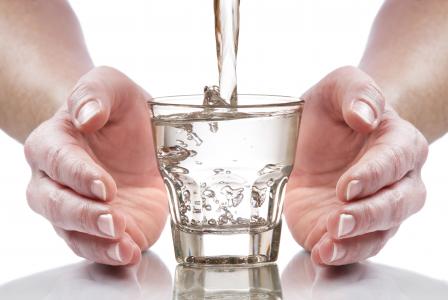EPA Lead (Pb) Research: Water
 Lead that finds its way into drinking water supplies through the corrosion of aging lead services lines or welding solder, changing water chemistry, or other avenues of contamination can pose serious risks to public health, especially to children. EPA researchers are working to develop a better understanding of the dynamics of why that happens, predict where and when it is likely to occur, and find technical and strategic solutions. The researchers are working closely with the EPA Office of Water, water utility operators, public health officials, local communities and municipalities, and other partners to develop innovative ways to better sample lead in water and keep it from flowing into homes, schools, and businesses. Their work is leading efforts to keep drinking water safe and reduce risks.
Lead that finds its way into drinking water supplies through the corrosion of aging lead services lines or welding solder, changing water chemistry, or other avenues of contamination can pose serious risks to public health, especially to children. EPA researchers are working to develop a better understanding of the dynamics of why that happens, predict where and when it is likely to occur, and find technical and strategic solutions. The researchers are working closely with the EPA Office of Water, water utility operators, public health officials, local communities and municipalities, and other partners to develop innovative ways to better sample lead in water and keep it from flowing into homes, schools, and businesses. Their work is leading efforts to keep drinking water safe and reduce risks.
Examples of how EPA researchers are helping address concerns about lead in drinking water are highlighted below.
Helping Communities Protect Drinking Water Systems from Lead
EPA researchers are leading innovative studies to investigate the inner workings of underground pipes and tackling the task of locating lead service lines to help local communities meet the challenges of aging water infrastructure and the risks of lead contamination. Through their outreach and technical support, they helped dozens of utilities develop corrosion control strategies to prevent exposure to lead and other contaminants. Read more: Scaling Back: EPA Researchers Help Communities Protect Drinking Water Systems from Lead
Researching Lead in Drinking Water: A Madison Wisconsin Case Study
In the early 2000s, the Madison Water Utility decided to rip out and replace the lead service lines lying beneath the city’s streets. Surprisingly, even afterward lead levels in some homes still tested high. To find out why, EPA researchers conducted detailed analysis on some of the old pipes that had been removed. What they learned provides critical insights into how utilities can better reduce the risk of lead in aging drinking water systems. The research was recognized by both the 2015 American Water Works Association’s Distribution & Plant Operations Division Best Paper Award and the overall Journal of the American Water Works Association’s Best Paper Award. Read more: Revealing the Complicated Nature of Tap Water Lead Contamination: A Madison, Wisconsin, Case Study
Helping Utilities Choose the Best Sampling Techniques
There are many types of sampling techniques available for water utilities to assess the presence of lead in drinking water. But how can they pick the best one to target specific concerns across large and complex systems? EPA researchers are helping. They have identified several sampling protocols to help water utilities assess and mitigate the risk of lead exposure. The research shows that there are different sampling techniques beyond the regulatory sampling protocols that can be applied to reach a specific objective, and each can be implemented to solve specific lead-related drinking water issues within a water system. Read more: Identifying the Best Lead Sampling Techniques to Protect Public Health
Technical Support to Match High Priority Drinking Water Challenges
EPA’s Office of Research and Development (ORD) provides technical assistance to Agency program offices, states, local communities, and other partners to help them respond to to high-priority challenges that emerge from drinking water contamination evens, including unexpected spikes in lead levels. A recent example is the technical and analytical lab support ORD provided the Michigan Department of Environmental Quality following the discovery of elevated lead levels in Flint, Michigan.
Other recent examples of EPA technical support include the following:
- Newark NJ – researchers are providing technical support to EPA's Region 2, the New Jersey Department of Environmental Protection, and the local municipality on corrosion control, drinking water sampling and analysis, and the efficacy of point-of-use water filters.
- University Park IL – researchers are providing technical support to EPA Region 5, the Illinois Department of Environmental Protection, and the local municipality on corrosion control, and with addressing elevated drinking water lead levels due to changes in water chemistry interacting with existing plumbing fixtures.
- Pittsburgh PA – researchers are providing technical support to EPA Region 3 and the local municipality on corrosion control and infrastructure resilience.
- Providence RI – for the past two years, researchers have been providing technical support to EPA Region 1 and the local municipality to prevent lead contamination in drinking water, including serving on an expert panel on drinking water safety.
